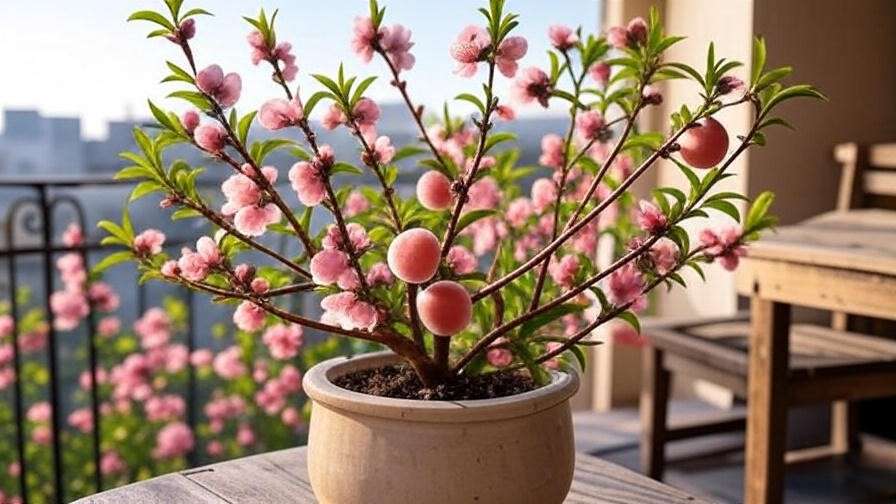Picture this: You step onto your cozy balcony, pluck a ripe, juicy peach from your very own patio peach tree, and savor the sweet taste of homegrown fruit—all without needing a sprawling orchard! Whether you’re an urban gardener with a tiny patio or a homeowner with a compact backyard, growing a patio peach tree is a rewarding way to bring fresh fruit and vibrant beauty to small spaces. This comprehensive guide, crafted by a certified horticulturist with over a decade of fruit tree expertise, will walk you through every step to ensure your patio peach tree thrives. From choosing the perfect variety to harvesting delicious peaches, we’ve got you covered with expert tips and practical advice. Let’s dive into the world of dwarf peach trees and transform your space into a fruitful oasis! 🌞
Why Choose a Patio Peach Tree? 🍑
Patio peach trees are a game-changer for small-space gardening. Their compact size, stunning blossoms, and ability to produce delectable fruit make them a favorite among urban gardeners and fruit enthusiasts alike.
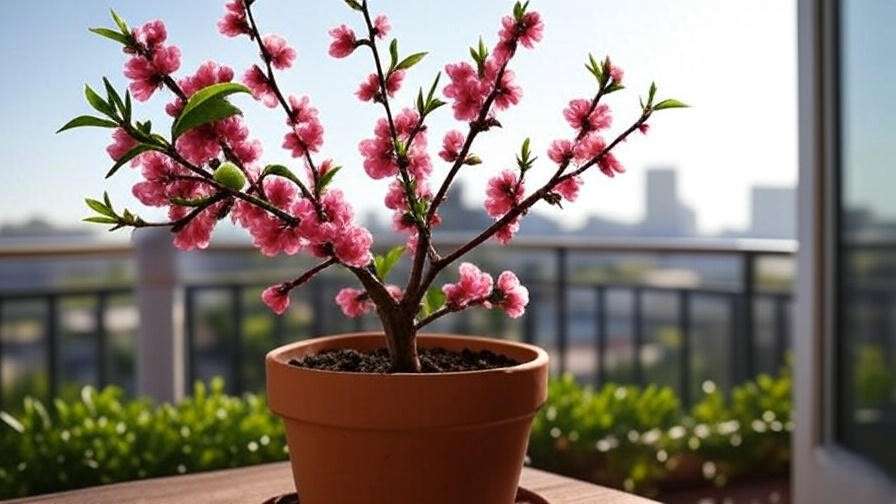
Benefits of Growing Patio Peach Trees
Dwarf peach trees are designed for small spaces, typically growing 4–6 feet tall, making them ideal for balconies, patios, or tiny gardens. Their vibrant spring blossoms add aesthetic charm, while their fruit offers a sustainable, homegrown treat. These trees are perfect for anyone looking to embrace urban gardening or reduce their grocery bill with fresh, organic peaches. Plus, caring for a patio peach tree is a delightful way to connect with nature, even in the heart of a city. 🌸
Popular Patio Peach Tree Varieties
Not all patio peach trees are created equal! Here are some top dwarf varieties:
- Bonanza: Known for its sweet, yellow-fleshed peaches and compact size (4–5 feet).
- Pix Zee: Produces large, flavorful fruit and is ideal for warmer climates.
- Honey Babe: A favorite for its sweet, juicy peaches and suitability for containers.
Expert Tip: Check your USDA hardiness zone (typically 5–9 for most varieties) to choose a tree that thrives in your climate. Consult local nurseries or extension services for region-specific recommendations.
Getting Started: Choosing and Planting Your Patio Peach Tree 🌿
The foundation of a thriving patio peach tree lies in selecting the right variety and planting it properly. Let’s break it down.
Selecting the Right Patio Peach Tree
Choosing a healthy tree is crucial. Look for disease-resistant varieties to minimize future issues, especially in humid climates prone to fungal diseases. Consider your space constraints and sunlight availability—most patio peach trees need at least 6–8 hours of direct sun daily. Purchase from reputable nurseries or trusted online suppliers like Stark Bro’s or FastGrowingTrees.com for quality assurance. A healthy tree will have a strong root system and no signs of pests or disease.
Planting Your Patio Peach Tree
Proper planting sets the stage for success. Follow these steps:
- Choose a Container: Select a pot at least 15–20 gallons with drainage holes to prevent root rot. Terracotta or plastic works well.
- Prepare the Soil: Use a well-draining mix, such as a blend of potting soil, compost, and perlite, with a pH of 6.0–7.0.
- Plant the Tree: Place the tree in the center, ensuring the root ball is level with the soil surface. Fill with soil, tamp gently, and water thoroughly.
- Stake if Needed: For windy areas, use a stake to stabilize the tree.
Expert Insight: Planting in early spring allows the tree to establish roots before summer heat.

Ideal Location and Sunlight Needs ☀️
Patio peach trees crave sunlight—aim for 6–8 hours of direct sun daily. South-facing balconies or patios are ideal. In urban settings, reflective surfaces like white walls can boost light exposure. Protect your tree from strong winds by placing it near a wall or using a windbreak. If temperatures drop below 20°F, consider moving potted trees indoors or wrapping them for winter protection.
Essential Care Tips for a Thriving Patio Peach Tree 🌸
Caring for your patio peach tree involves consistent watering, fertilizing, pruning, and pest management. Here’s how to keep it healthy and productive.
Watering Requirements 💧
Watering is critical, especially for container-grown trees. Water deeply when the top 1–2 inches of soil feel dry, typically every 2–3 days in summer. Avoid overwatering, as soggy roots can lead to rot. Signs of overwatering include yellowing leaves, while underwatering causes wilting or leaf drop.
Expert Tip: Use a moisture meter to gauge soil moisture accurately, especially in containers where drainage varies.
Fertilizing for Optimal Growth 🌾
Feed your patio peach tree with a balanced fertilizer (e.g., 10-10-10 NPK) in early spring and again in early summer. Organic options like compost tea or fish emulsion work well for eco-conscious gardeners. Apply fertilizer sparingly to avoid burning roots—follow package instructions. Over-fertilizing can lead to excessive leaf growth at the expense of fruit.
Warning: Skip fertilizing in late summer to prevent new growth that’s vulnerable to frost.
Pruning and Training Your Tree ✂️
Pruning keeps your patio peach tree productive and manageable. Prune in late winter or early spring before buds swell:
- Remove Dead Wood: Cut away any dead, damaged, or crossing branches.
- Shape the Tree: Use an open-center pruning style to maximize light and air circulation.
- Thin Branches: Reduce overcrowding to encourage larger, healthier fruit.
Training your tree to a compact shape also enhances its aesthetic appeal.
Example: A well-pruned tree has a vase-like structure, with 3–4 main branches fanning out from the center.
Pest and Disease Management 🐞
Patio peach trees face threats from pests like aphids, peach tree borers, and spider mites, as well as diseases like peach leaf curl and brown rot. Combat these with:
- Organic Controls: Neem oil or insecticidal soap for pests; copper-based fungicides for leaf curl.
- Chemical Controls: Use targeted pesticides only as a last resort, following local regulations.
- Prevention: Clean up fallen leaves, ensure good air circulation, and inspect regularly.
Expert Tip: Introduce beneficial insects like ladybugs to naturally control aphids.
Seasonal Care for Patio Peach Trees 📅
Each season brings unique care needs to keep your tree thriving year-round.
Spring Care: Encouraging Blossoms and Fruit Set 🌸
Spring is when your patio peach tree bursts into bloom. Thin excess flowers to prevent overloading the tree, leaving one flower every 6–8 inches. Monitor for early pests like aphids and apply organic sprays if needed. Increase watering as temperatures rise, ensuring the soil stays consistently moist but not waterlogged.
Summer Care: Supporting Fruit Development ☀️
As peaches develop, protect them from birds and insects with netting or breathable fruit bags. Water consistently, especially during heatwaves, to prevent fruit drop. Check for nutrient deficiencies—yellowing leaves may indicate a need for nitrogen or iron.
Expert Tip: Mulch the soil surface with bark or straw to retain moisture and regulate temperature.
Fall and Winter Care: Preparing for Dormancy ❄️
As your patio peach tree enters dormancy in fall, reduce watering to once every 7–10 days, depending on rainfall. Stop fertilizing to avoid stimulating new growth that could be damaged by frost. Clean up fallen leaves and fruit to prevent fungal diseases. For winter, protect potted trees in cold climates (below 20°F) by:
- Wrapping the container with burlap or bubble wrap to insulate roots.
- Moving the tree to a sheltered area, like a garage or near a building, during extreme cold.
- Applying a layer of mulch over the soil to retain warmth.
Expert Tip: In USDA zones 5 or lower, consider a frost blanket for added protection during freezes.
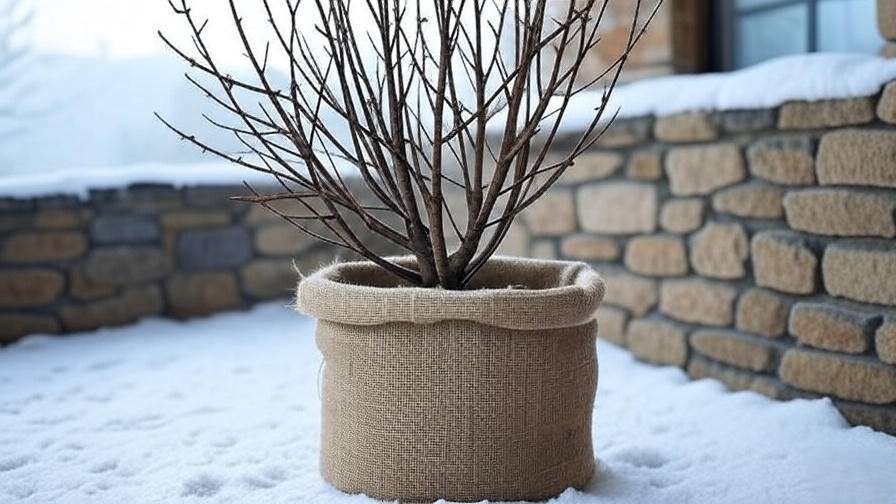
Harvesting and Enjoying Your Patio Peaches 🍑
The reward of your hard work is harvesting sweet, juicy peaches right from your patio! Knowing when and how to pick them ensures the best flavor and tree health.
When and How to Harvest
Peaches are ready to harvest when they:
- Develop vibrant color (yellow or red, depending on the variety).
- Feel slightly soft to the touch but not mushy.
- Detach easily from the branch with a gentle twist.
Harvest in the morning when temperatures are cooler to preserve flavor. Use clean, sharp pruning shears for stubborn fruit to avoid damaging branches.
Expert Tip: Store peaches at room temperature for a day or two to ripen further, then refrigerate for up to two weeks.
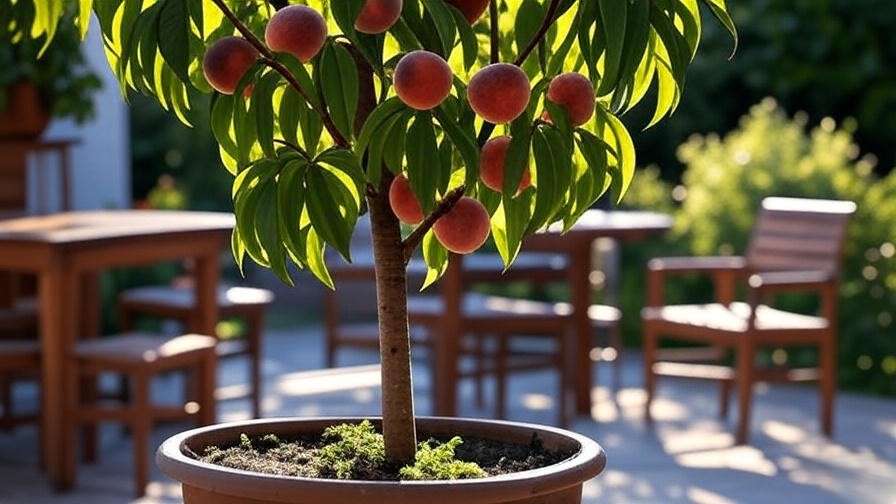
Creative Uses for Your Peaches
Your homegrown peaches are perfect for a variety of uses:
- Recipes: Blend into smoothies, bake into pies, or grill with a drizzle of honey for a summer treat.
- Preserving: Make peach jam, freeze slices for winter, or dry them for snacks.
- Sharing: Gift excess fruit to neighbors or donate to local food banks.
Idea: Try a simple peach salsa recipe with cilantro, lime, and jalapeño for a fresh twist!
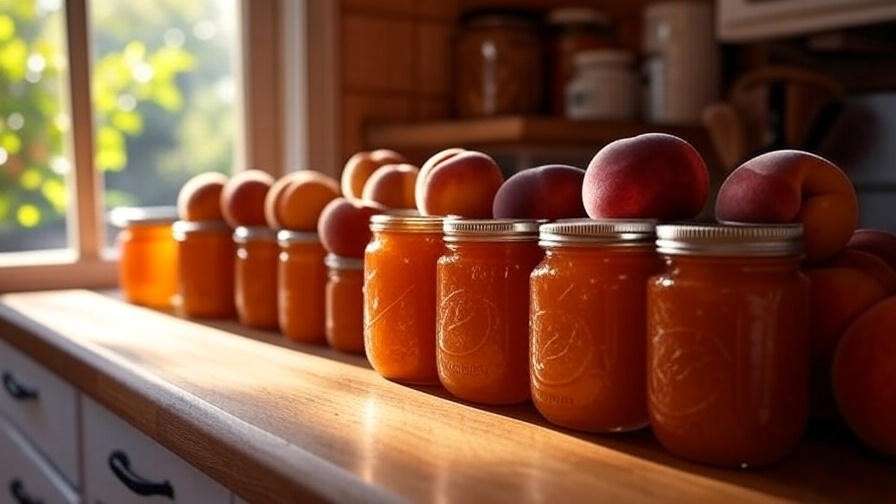
Troubleshooting Common Patio Peach Tree Problems ⚠️
Even with the best care, issues can arise. Here’s how to address common challenges:
- No Fruit Production: Possible causes include poor pollination, insufficient sunlight, or nutrient imbalances. Ensure bees have access to flowers, provide 6–8 hours of sun, and fertilize appropriately. Hand-pollination with a small brush can help if pollinators are scarce.
- Leaf Curl or Wilting: Often caused by peach leaf curl (a fungal disease) or improper watering. Apply copper fungicide in late fall or early spring for leaf curl, and adjust watering to avoid soggy or dry soil.
- Stunted Growth: Check if the tree is root-bound; repot into a larger container if needed. Poor soil or nutrient deficiencies may also be culprits—test soil pH and amend as necessary.
Expert Recommendation: Keep a gardening journal to track issues and solutions for future success.
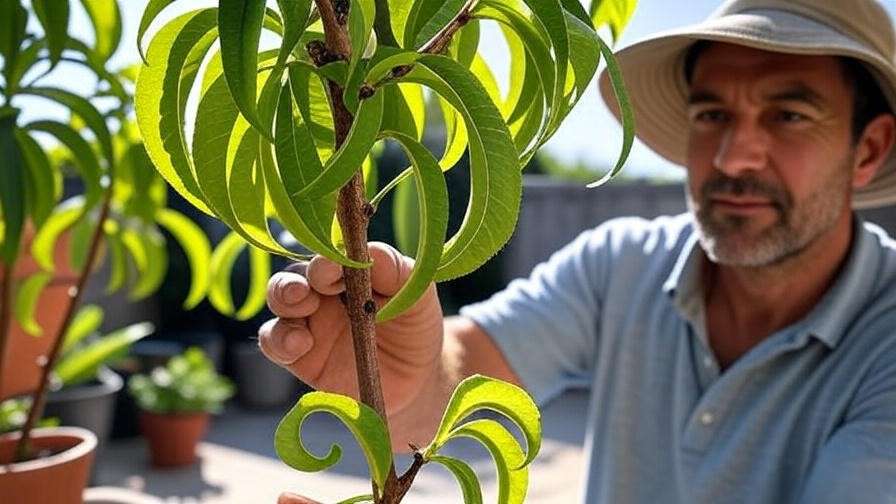
FAQs About Patio Peach Tree Care ❓
Here are answers to common questions from patio peach tree growers:
- Q1: How long does it take for a patio peach tree to bear fruit?
Most dwarf varieties produce fruit within 1–3 years, depending on the tree’s age at purchase and care quality. - Q2: Can I grow a patio peach tree indoors?
Indoor growing is possible with ample sunlight (e.g., near a south-facing window) and supplemental grow lights, but outdoor conditions are ideal for fruit production. - Q3: What’s the best way to protect my tree from pests organically?
Use neem oil, introduce beneficial insects like ladybugs, and maintain good hygiene by removing fallen debris. - Q4: How do I know if my patio peach tree is healthy?
Look for vibrant green leaves, steady growth, and no signs of pests or disease. Annual fruit production is a good indicator of health. - Q5: Can patio peach trees survive winter in cold climates?
Yes, with proper winterizing (insulating pots, using frost blankets), they can thrive in zones 5–9.
Expert Tips for Long-Term Success 🌟
To elevate your patio peach tree game, try these pro tips:
- Companion Planting: Pair your tree with marigolds or garlic to deter pests naturally.
- Mulching: Apply a 2-inch layer of organic mulch (e.g., bark or straw) to conserve moisture and regulate soil temperature.
- Care Checklist: Create a seasonal care calendar to stay on top of watering, fertilizing, and pruning tasks.
- Community Engagement: Join local gardening groups or online forums like Reddit’s r/gardening to share tips and learn from others.
Resource: Download a free patio peach tree care checklist from our website to streamline your routine!
Conclusion: Your Journey to a Thriving Patio Peach Tree 🌳
Growing a patio peach tree is a delightful way to bring fresh fruit and natural beauty to even the smallest spaces. With the right variety, proper planting, and consistent care, you’ll be rewarded with stunning blossoms and delicious peaches year after year. This guide has equipped you with expert insights to tackle every stage of your tree’s journey—from planting to harvest. Start today, and soon you’ll be savoring the fruits of your labor! Share your patio peach tree success stories in the comments or tag us on social media with #PatioPeachTree. Ready to explore more? Check out our articles on dwarf citrus trees or organic pest control for fruit trees! 🍑

